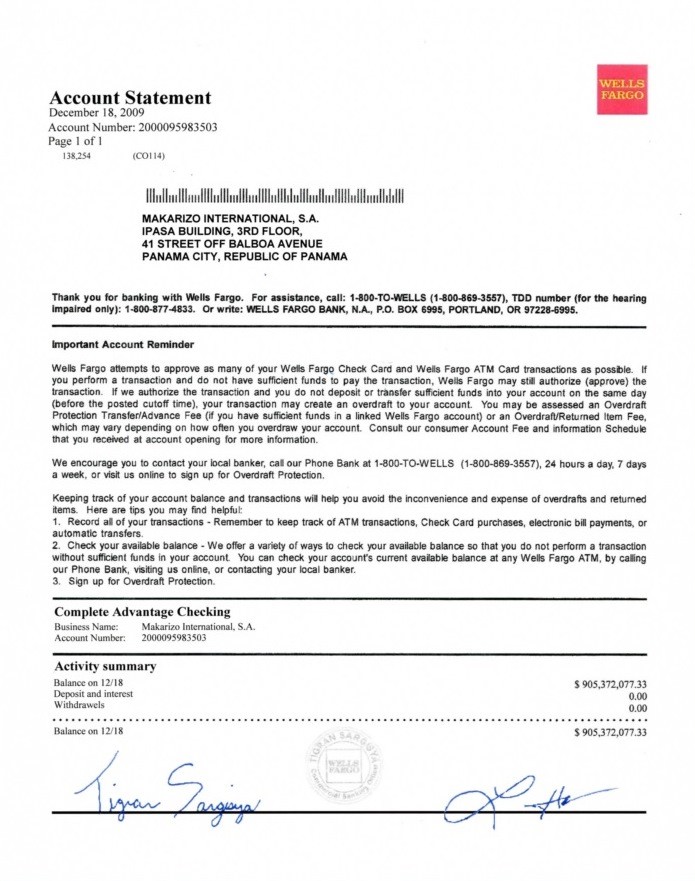Wells Fargo’s Profit Looks Too Good to Be True Jonathan Weil
Post on: 16 Март, 2015 No Comment

Commentary by Jonathan Weil — April 16, 2009 00:01 EDT
April 16 (Bloomberg) — Wells Fargo & Co. stunned the world last week by proclaiming it had just finished its most profitable quarter ever. This will go down as the moment when lots of investors decided it was safe again to place blind faith in a big bank’s earnings.
What sent Wells shares soaring on April 9 was a three-page press release in which the San Francisco-based bank said it expected to report first-quarter net income of about $3 billion. Wells disclosed few details of what was in that figure. And by pushing the stock up 32 percent that day to $19.61, investors sent a clear message: They didn’t care.
Dig below the surface of Wells’s numbers, though, and there are reasons to be wary. Here are four gimmicks to look out for when the company releases its first-quarter results on April 22:
Gimmick No. 1: Cookie-jar reserves.
Wells’s earnings may have gotten a boost from an accounting maneuver, since banned, that it used last year as part of its $12.5 billion purchase of Wachovia Corp. Specifically, Wells carried over a $7.5 billion loan-loss allowance from Wachovia’s balance sheet onto its own books — the effect of which I’ll explain in a moment.
First, a quick tutorial: Loan-loss allowances are the reserves lenders set up on their balance sheets in anticipation of future credit losses. The expenses that lenders record to boost their loan-loss allowances are called provisions. As loans are written off, lenders record charge-offs, reducing their allowance.
Free to Dip
Once it took control of the reserve from Wachovia, Wells was free to start dipping into it to absorb new credit losses on all sorts of loans, including loans Wells had originated itself. (Think of a child raiding a cookie jar.)
The upshot is that Wells could get by with reduced provisions until the $7.5 billion is used up, boosting net income.
Another quirk: The reserve was related to $352.2 billion of Wachovia loans for which Wells was not forecasting any future credit losses, according to Wells’s annual report.
Small Losses
All this may help explain Wells’s surprisingly small loan losses. For the first quarter, Wells said net charge-offs were $3.3 billion, compared with $6.1 billion at Wells and Wachovia combined for the fourth quarter. Provisions were $4.6 billion, bringing Wells’s allowance to $23 billion, as of March 31.
Wells, which completed its purchase of Wachovia on Dec. 31, wouldn’t have been allowed to carry over the allowance had it completed the acquisition a day later. On Jan. 1, new rules by the Financial Accounting Standards Board took effect prohibiting such transfers. A Wells spokeswoman, Janis Smith. declined to comment.
Gimmick No. 2: Cooked capital.
The most closely watched measure of a bank’s capital these days is a bare-bones metric called tangible common equity. While the term doesn’t have a standardized definition under generally accepted accounting principles, it typically means a company’s shareholder equity, excluding preferred stock and intangible assets, such as goodwill leftover from past acquisitions.
Measured this way, Wells had $13.5 billion of tangible common equity as of Dec. 31, or 1.1 percent of tangible assets. Yet in a March 6 press release. Wells said its year-end tangible common equity was $36 billion. Wells didn’t say how it arrived at that figure. Nor could I figure out from the disclosures in Wells’s annual report how it got a number so high.
Shouldn’t Be Guessing
Investors shouldn’t have to guess. Under a Securities and Exchange Commission rule called Regulation G, companies that release non-GAAP financial measures are required to disclose “a reconciliation of the disclosed non-GAAP financial measure to the most directly comparable GAAP financial measure.” (The rule applies to press releases, as well as formal SEC filings.) That way, anyone can see how the numbers were calculated.
Wells didn’t do this in its March 6 release. A spokeswoman, Julia Tunis Bernard. declined to tell me the math Wells used. Silly me — I thought the SEC’s rules apply to Wells Fargo, too.
Gimmick No. 3: Otherworldly assets.
Look at Wells’s Dec. 31 balance sheet. and you’ll see a $109.8 billion line item called “other assets.” What’s in that number? For that breakdown, you need to go to a footnote in Wells’s financial statements. And here’s where it gets comical.

The footnote says the largest component was a $44.2 billion bucket that Wells labeled as “other.” Yes, that’s right: The biggest portion of “other assets” was “other.” And what did this include? The disclosure didn’t say. Neither would Bernard.
Talk about a black box. That $44.2 billion is more than Wells’s tangible common equity, even using the bank’s dodgy number. And we don’t have a clue what’s in there.
Gimmick No. 4: Buried losses.
How quickly investors forget. One week before Wells’s earnings news, the FASB caved to pressure by the banking industry and passed new rules that let companies ignore large, long-term losses on the debt securities they own when reporting net income.
Wells didn’t say what its first-quarter earnings would have been without the rule change, which companies can apply to their latest quarterly results. As of Dec. 31, though, Wells had $12.2 billion of gross losses on securities held for sale that weren’t included in earnings. Of those, $4.2 billion were on securities that had been worth less than their cost for more than a year.
The bottom line: Net income isn’t necessarily income. And it means nothing without complete financial statements.
Investors should have learned this lesson by now.
(Jonathan Weil is a Bloomberg News columnist. The opinions expressed are his own.)
Click on
To contact the writer of this column: Jonathan Weil in New York at jweil6@bloomberg.net
To contact the editor responsible for this story: James Greiff at jgreiff@bloomberg.net














